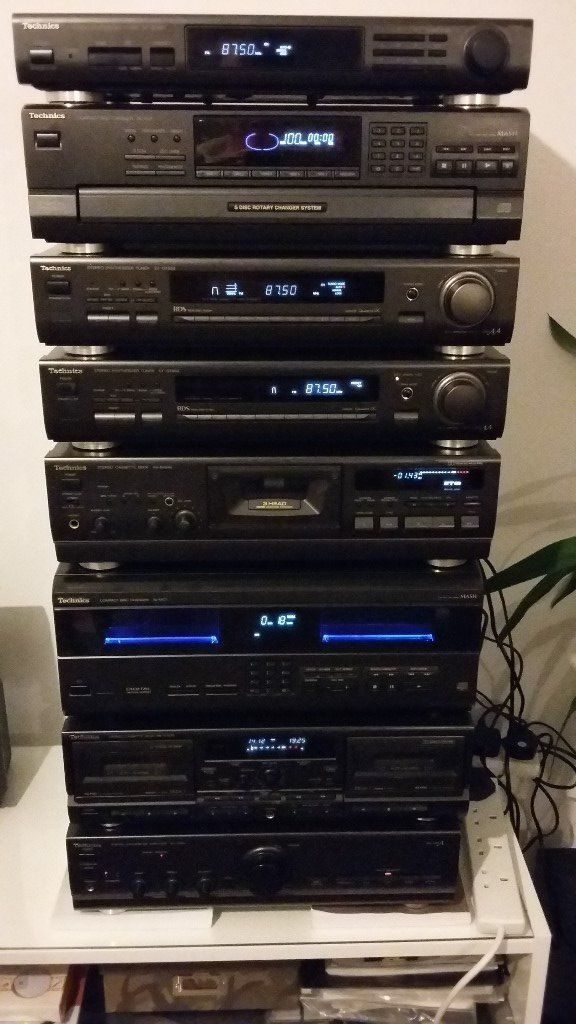Table of Content
With all the components in place, you can start assembling your DIY speaker. This way, you can open the speaker and make adjustments without destroying any major components. Fill the cabinet with the acoustic foam or any other dampening material that you purchased. Then, fix the crossover design, binding ports, and everything else to the cabinet. It takes about 40 hours to build a speaker for experienced speaker-builders and people with woodworking and technical skills.

At the end of this article, I will mention a few projects that are well known and well documented to give you a place to start. But if that's too hit-or-miss, you can buy a speaker kit that comes with all the components, plus either a preconstructed cabinet or drawings to build your own. If you own a newer home theater receiver, you can harness its multi-room/-source features without the need to incorporate a switch. Many receivers have additional outputs that can provide two-channel audio to as many as three separate zones. This means you can have different music/sources playing in different areas instead of all speakers sharing the same one.
Stately DIY Ship Ladder Plans
Like before, you will leave roughly a foot of leftover wire on each side of the coil -- this is how you will attach your "speaker" to your music source. If your A/V receiver does not offer HT Bypass or Direct In, you can still connect it to an empty audio channel. As a result, the sound quality of your Bluetooth device will be significantly reduced.
In some models, the audio output is speaker level, which needs only lengths of wire connecting to all other speakers. Some receivers use an unamplified signal, which requires line-level cables and an additional amplifier between rooms and extra speakers. The crossover design usually comes with instructions, so connecting it to the woofer driver should not be too difficult. The crossover should be placed between your amplifier and your frequency drivers. Use the speaker wire to create an electrical link between the loudspeaker driver and the crossover networks. Just be careful when you are testing any electrical currents.
Connect the Bluetooth receiver to the Speaker or Speaker System through the included USB cable.
So any sound with frequency less than 2500 Hz will be sent to the woofer and vice versa for the tweeter. This means you need to chose a woofer and tweeter with overlapping frequency responses so no frequencies will be lost while in operation. It is also possible to make your own crossover but i will not go into that. Most audio professionals consult the Loudspeaker Design Cookbook or LDSB, for advice on choosing drivers and crossovers, and you can expect to pay more for better quality components. A preamp might be a viable alternative for speakers that lack built-in volume controls.
As previously mentioned, a good speaker can be quite expensive. So, if you are able to meet clients’ design goals and produce a high-quality sound, you can sell a pair of speakers for good money. Solid speaker cabinets are vital for ensuring crossover frequency and internal volume.With all your components in place, it is time to start building your speaker.
How to Build Your Own Speaker FAQ
It has a set of phono inputs and a grounding screw, so you can connect any turntable to this receiver without having to use a preamp. It has four speaker terminals, so you can listen to music in stereoor quadrophonic, an analog version of surround sound. It doesn’t have a fifth set of terminals for a center channel, or a subwoofer out, so it cannot be used in a 5.1 surround sound system.

However, this article covers a 3-way design since this is what is needed to meet the design goals without any magic. There are many different types of enclosures and methods used to extend low frequency response. For the purpose of this article, we will show the development of a 3-way vented enclosure. Expansion is one of the reasons we’re recommending the PM5005, but its stock features are impressive, too.
#3. DIY Wood Bluetooth Speaker Build
This means you can use your speaker to watch videos on your laptop or as a DJ with your phone. Scroll through the plans below and select one for a fun, weekend DIY project. You can build a truly powerful unit or just something small for your desktop enjoyment. Speakers allow you to easily build high-end in-wall or in-ceiling speaker, simply mount this speaker in your own baffle. There are a few basics I learned in engineering college & physics such as audio wavelength. However, those basics are easy to find on science & physics sites also.
All project documentation presented on this site is free for personal non-commercial use. If you have a DIY Audio Project that you would like to share with others through this site, or if you have any comments, contact us or post a message on the DIY Audio Projects Forum. Questions about a specific projects can be sent to the project author noted at the top of the project page. If you are new to DIY Audio but want to learn more, take a look at our DIY Audio Book recommendations. We’re recommending this cable from Mediabridge because it checks off all the right boxes.
To add rigidity, there is a plywood crossbrace running internally across the width of the box. This receiver uses a custom three-stage amplification concept and can output up to 40W of energy per channel. Marantz says these features allow the PM50005 to get loud-but-accurate sound out of speakers, and support formats like SACD and DVD-A. It also uses a custom volume amplifier circuit, which guarantees consistent performance regardless of which speakers you’re using. Having a good set of speakers is important, but doesn’t mean much if you don’t have anything to connect it to.
At its core a loudspeaker is a surprisingly simple device. The key elements are the drivers, crossovers and the cabinet. The cone or dome drivers are transducers that transform the electrical signal into the physical movement of air (i.e., sound). Crossovers act as an electrical filter to split the signal and direct the portions of the audio-frequency range to the drivers best equipped to handle them. But coaxing rich and beautiful sound out of these elements requires a bit of harmonic alchemy.
Although it can be possible to find a single-row wire terminal strip they’re hard to get. I recommend using a dual row strip as they’re affordable and much easier to find. Inductors, capacitors, and resistors are sold in standardized values and you’ll almost never find the EXACT value. In many cases it’s not stocked by a supplier and not worth the time trying to search and search for it.
Australian beeswax is used on the outside of the horn cabinet and heavy cedar oil was applied to the mouth of the horn. The sensitivity of the FE206En driver is greater than 96 dB / 1W / 1m, so the rear-loaded horn speakers are very well suited for use with very low power tube amplifiers. Mark reports that the horn speakers can draw an extremely accurate soundstage, sound excellent and have lead to a whole new listening experience with Paris, a 2.5W 6EM7 SET amplifier. These speakers won’t sound any different from familiar famous name speakers sold at four to five times the cost. Or, if you wish, we will assemble them for you and ship them complete and ready to play. After spending less than $100 for wood, on top of the cost of the kit, I ended up with a high-performance system that sounded better than most $500 speaker pairs I've heard.
Tom has put together an instructional guide to construct simple line-level RCA interconnect cables. The cables use shielded instrument wire and is very simple to construct requiring only some basic soldering skills. The required parts are easy to source and a pair of these shielded RCA cables can be built for as little as $10. Use these simple DIY cables to upgrade your stock and inexpensive interconnects. With the design goals in mind, the first step is to decide what kind of speaker will meet the technical requirements, budget and size limitations. For a first design, a 2-way loudspeaker should be the limit as 3-way speakers are a little more complicated to pull off properly.

Unless you’re using headphones, a line-level signal is insufficient to power a speaker. Line level signals require very little energy to deliver a sound signal. Before it reaches your speakers, a line-level signal needs be boosted. To make your speakers Bluetooth-enabled, you’ll need a Bluetooth receiver. The receiver detects and converts a Bluetooth audio signal to an electrical audio stream.

No comments:
Post a Comment